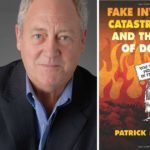(Editor’s note: What Tim describes below is the process for collecting and counting ballots used by the state of Minnesota. All states are individually responsible for coming up with and executing their own systems. Also, voting machines in Minnesota are not directly connected to the internet; this is not necessarily true in other states.)
There still might be time for you to get a firsthand look at how elections really operate. Sign up to become an election judge.
For the past two years or so we have heard a lot of unsubstantiated nonsense about a stolen election. Every serious investigation, including the Maricopa County, Arizona, Cyber Ninjas farce, has turned up nothing more than a literal handful of miscounted votes.
So-called election observers have made outrageous claims of malfeasant actions by elections judges, although these observers never bothered to learn what it is election judges actually do, nor how they accomplish an important task.
My mom was an election judge for many years, and when I retired I decided to join the ranks of people who take an oath to make the elections fair, open and honest. It was an eye-opener to learn the many tasks of election judges, and to see how seriously the system guards the sanctity of elections.
In terms of fairness, every polling place is staffed by an equal number of judges from major political parties. We don’t (and aren’t allowed to) wear signs declaring our political affiliation, and no other judges ever ask. The head judges (also of two different parties) know and can call on the appropriate people when the situation calls for it.
One such case is the set up and take down of the ballot counting machine. A judge from each party participates. The head judge has the keys, and opens the door to the cabinet beneath the machine, where the blank ballots for the precinct have been placed. These are sealed in bundles of 100. The judges remove enough packs to get started and give them to the ballot judges (again two parties) who open the packs, count the ballots and initial each one.
The remaining ballots are kept in the locked cabinet until needed. Next, a smaller locked door is opened to see if the auxiliary ballot box is empty. This is an area where marked ballots can be kept secure in case the machine is temporarily out of order.
The top of the machine is then unlocked and opened. The monitor is lifted into place and the machine is turned on. When the machine is ready, another locked door is open to reveal the paper tape. An icon is pressed on the screen and a tape prints out with a set of information, including counts that should all read zero. That tape is not torn off and remains in the compartment which is again locked until the end of the day.
Another locked compartment contains the memory stick onto which the ballot counting information will be stored. This has a numbered seal, and this number is checked against documents provided by the election office. There are several serial number checks that go on during the precinct opening process with all equipment, including electronic tablets used for voter registration information. The memory stick compartment is closed and locked until the end of the day.
Throughout the day, a judge attends the ballot counting machine, directing voters to place the ballots into a slot which feeds the ballot inside. If a ballot is improperly marked – for example, voting for more than one candidate for a particular position – the machine will reject the ballot and give a reason. There is a process for spoiling this ballot and issuing a replacement (duplicate). Otherwise, the monitor screen shows that the ballot has been counted, and the voter is free to go.
When the polls close, there is a kind of reverse process with the ballot counting machine, again involving judges from two parties. All of the ballots that have been processed into the machine drop into the ballot cabinet. The two judges retrieve them and place them in an envelope. And end-of-day paper tape is printed out, which has multiple copies of the votes recorded by the machine. The number of ballots that the machine reports that it has processed is checked against the tallies of ballots issued by the ballot judges. Certain tallies are written on each of the paper tape copies and this information is logged and the tapes are placed in different envelopes. There are at least nine different envelopes with information, logs, ballot receipts, signed voter oaths and so on that are collected, sealed and signed by all judges working at the end of the day.
Finally, the seal on the memory stick is clipped with wire cutters so the stick and the seal can be placed in an envelope. At that point the ballot machine is shut off and closed. All of the information, ballots, tapes, memory stick and other required materials are then taken by the head judges, traveling together, to the election office.
That is just one facet of what judges do to set-up, operate, and close the polls. We allow observers, who cannot interact with voters, but who can ask election judges any questions. Observers are permitted to watch the closing activities, but cannot handle any materials or interfere with the actions.
It would take a few thousand more words to go into detail about all the factors involved in making elections accessible, safe and secure. The insights offered here are just to give a clue as to how much attention to detail, and how many safeguards are built into the election process.
If you want to find out more, take the election judge training. Serve just one time on election day, or as an absentee ballot counter, or as a judge for early voting conducted at your local county or city election office. Then see if you can find a hole in the system big enough for a fraud of a thousand votes.






 and
and